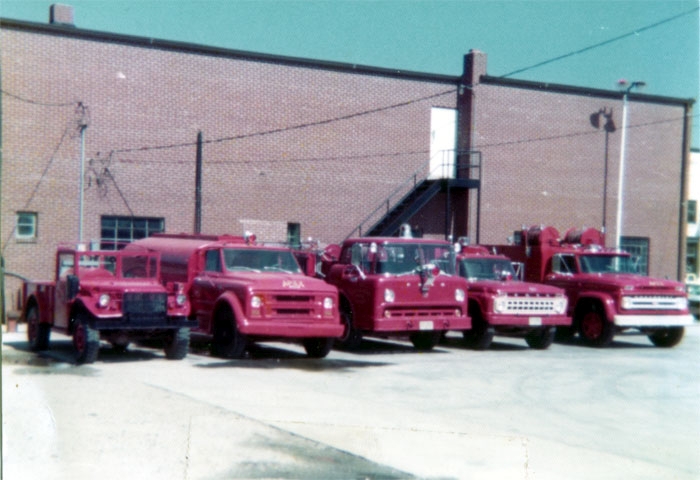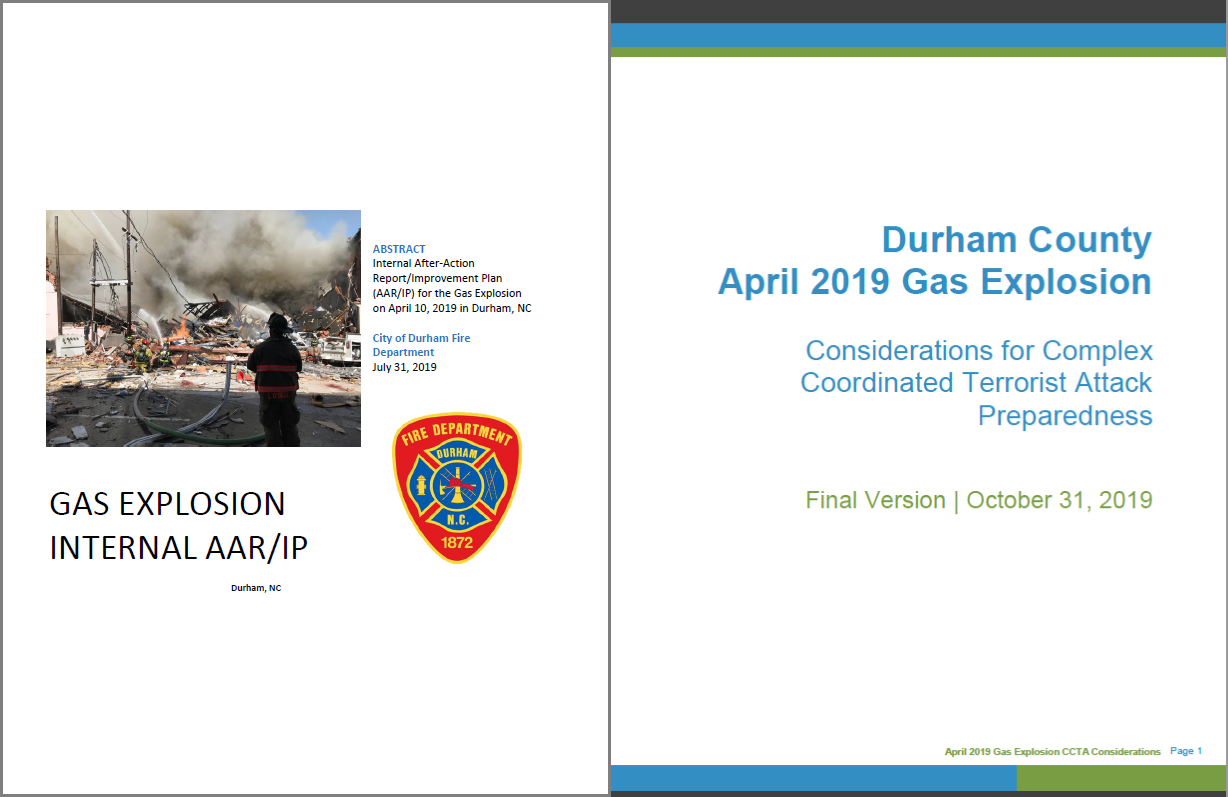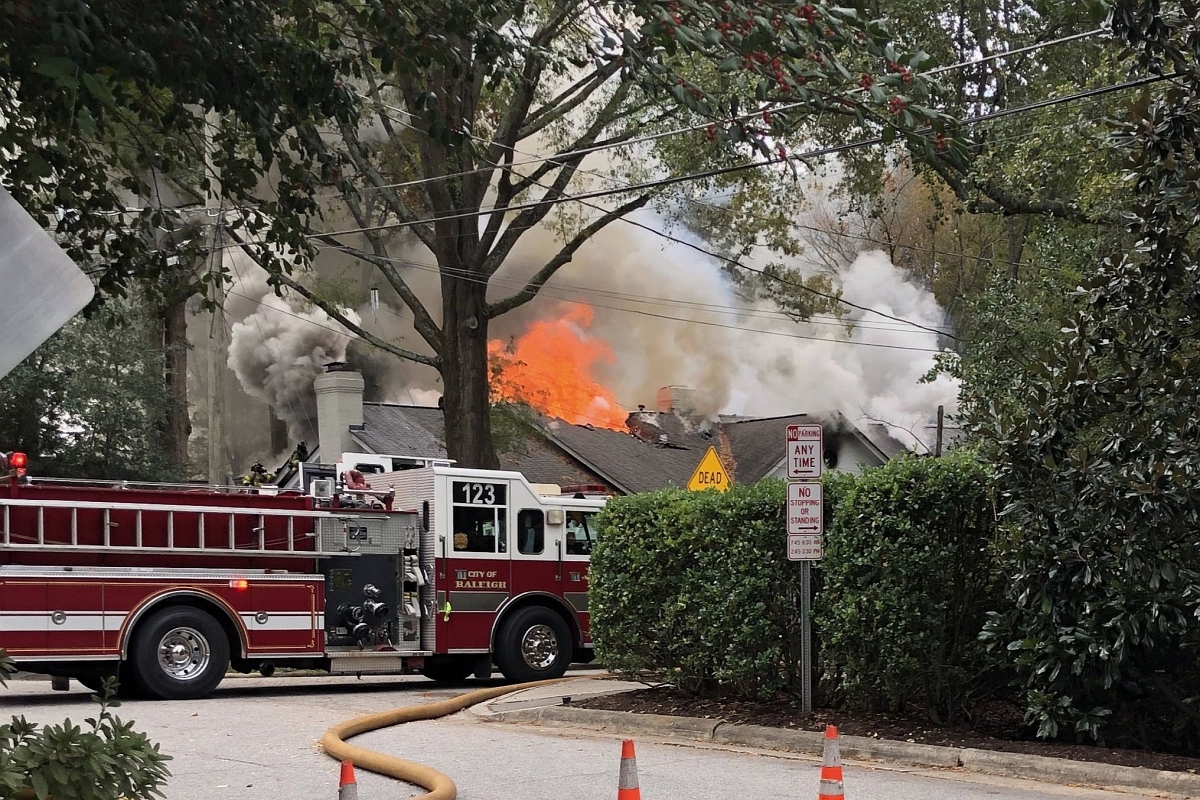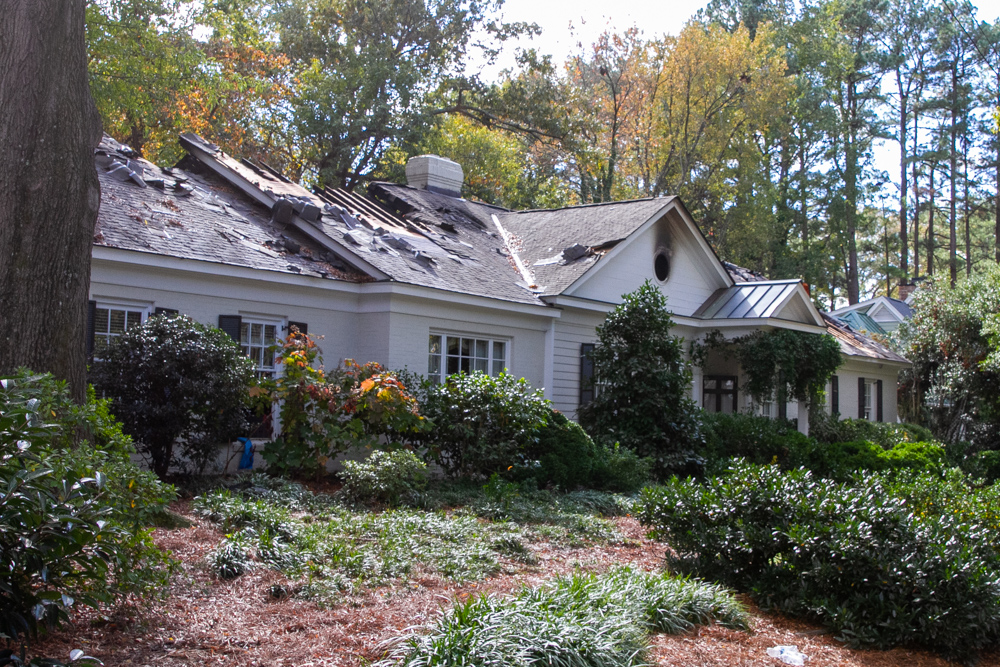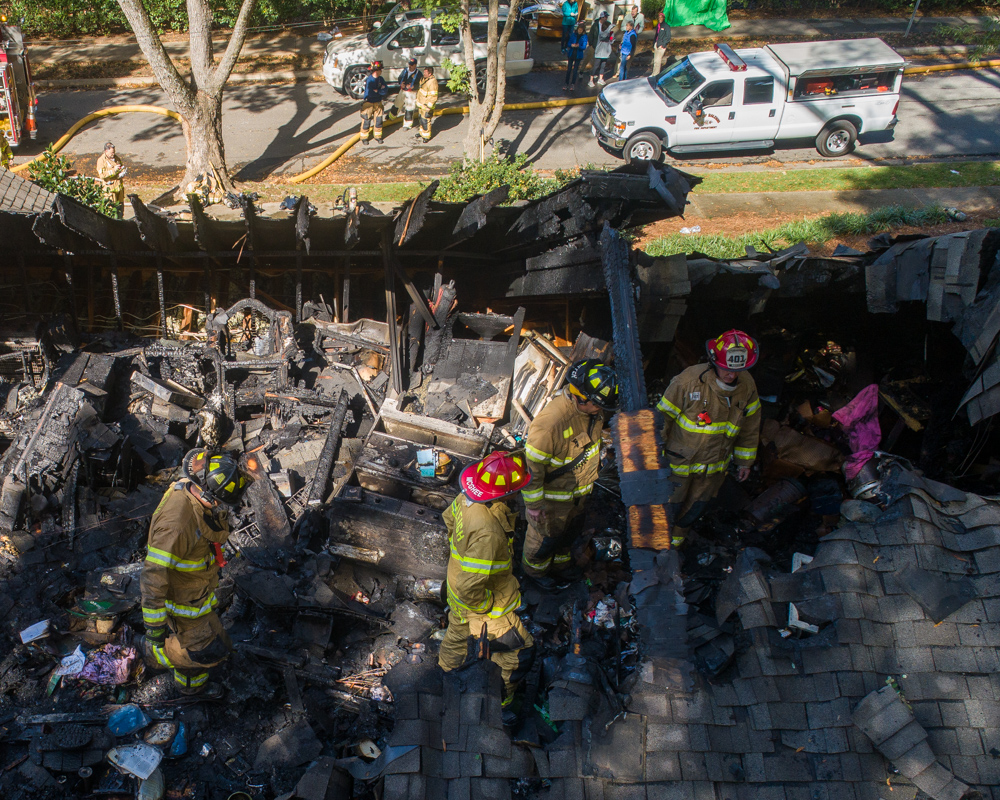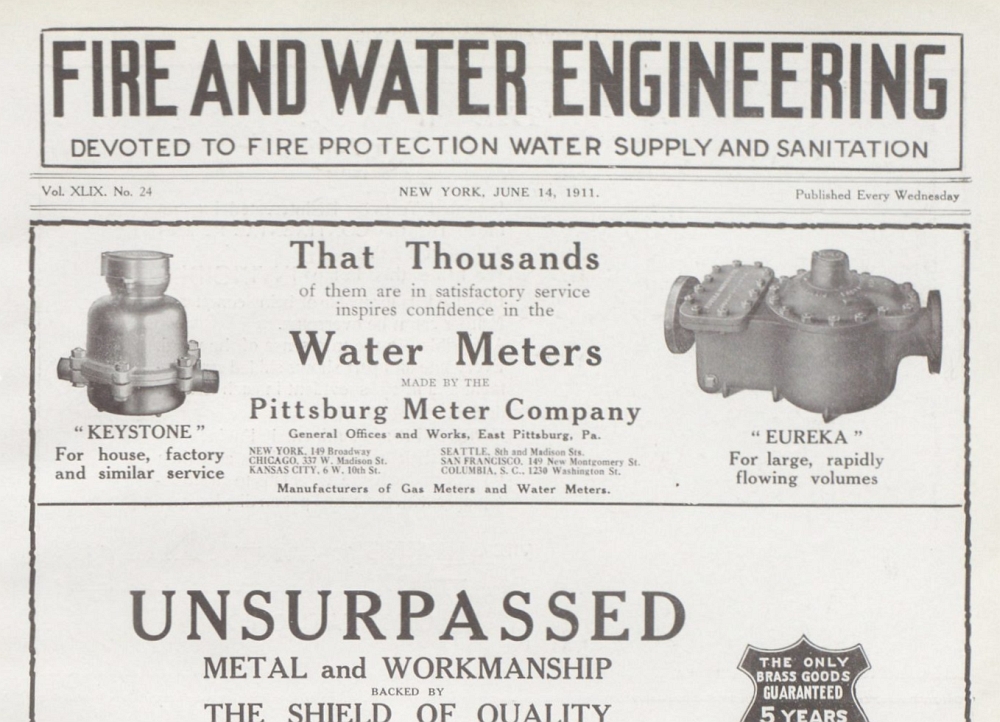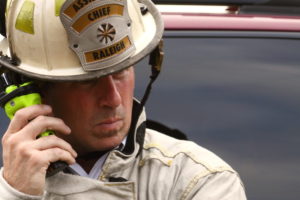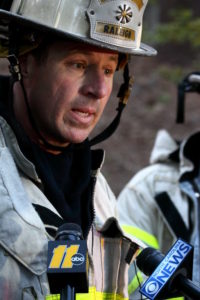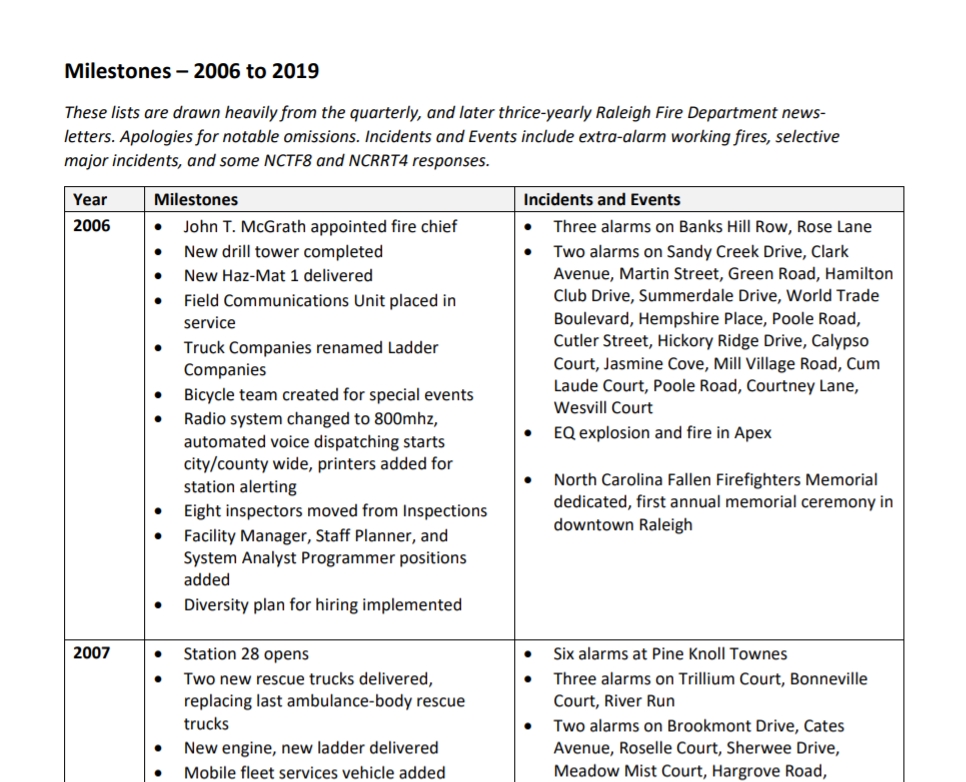Let’s build a timeline. Histories of rescue services in Orange County. To be updated over the coming days and weeks. Based on this Facebook posting. See also this Google drive folder of research documents.

1963 to 1969
1963, Apr – Class project started by UNC Air Force ROTC cadets, for a civilian defense “operational survival plan.” Objectives include organizing a local rescue squad. Source: CHW, 4/24/63.
1963, Nov – Carrboro-Chapel Hill Rescue being organized, with about 60 people combined from local CAP and USAF ROTC rescue units. Source: CHW, 11/24/63.
1965, Jul – Plans for a Durham-Orange county rescue squad organization discussed at a meeting in Chapel Hill, sponsored by the CH CAP squadron. Entity would be set up independently in OC, and could be coordinated with Durham’s squad as needed. Also floated is idea of a tri-county squad, that would incorporate Granville’s rescue team. Source: DMH, 7/23/65, 7/29/65.
1965, Aug – Formal organization of an Orange County Rescue Squad (OCRS) on agenda for Chapel Hill Town Hall meeting. Source: CHW, 8/1/65.
1967 – OC begins subsiding ambulance service, after Walker’s Funeral Home in Chapel Hill discontinues services, saying that new state requirements are too high and profits are too low. County contracts with Ambulance Service Inc., who provides two vehicles, one in Chapel Hill and one in Hillsborough. Source: CHW, 12/4/68.
1968, Jun 13 (filing date) – Orange County Rescue Squad, Inc. chartered. Source: State corporation records.
1968, Aug – Orange County Rescue Squad (OCRS) goes in service. Has 40 volunteers and a donated panel truck. Calls for service are routed through the Sheriff’s office in Hillsborough. They are not a patient transport service, however. Sources: CHW, 6/19/68; CHW, 12/25/68.
1968, Dec 31 – Orange County changes arrangements for ambulance service. Chapel Hill and Carrboro will be served by new firm, Durham Ambulance Service. Northern end of county will be served by volunteer OCRS. The one-year contract with Ambulance Service Inc. is allowed to expire. New arrangement takes effect January 1. The Durham service will receive a $29,300 subsidy from OC to provide once ambulance stationed in Chapel Hill-Carrboro area for one year.
1969, Jan 1 – Durham Ambulance Service begins providing ambulance service in Chapel Hill-Carrboro and southern OC. They have an ambulance on 24-hour duty at 208 W. Main Street. Surce: DS, 1/2/69.
1969, Jan 1 – OCRS begins providing ambulance service to northern OC. Squad has 31 volunteer members, an ambulance (old Cadillac named “Maude”), a rescue truck (old laundry truck), and a 14-foot boat. They’re housed in a former Strum service station adjacent to the courthouse. Requests for ambulance service handled through OC Sheriff’s Office. Beginning in early 1969, dispatchers will be on duty 24/7 at the sheriff’s office. Source: CHN, 6/19/68, CHW, 12/25/68, CHN 3/2/75.
1969, May – Carrboro-Chapel Hill Rescue Squad has two new(er) rescue vehicles, including a panel van. The squad has twelve members, and covers southern OC, and provides “supplementary rescue work.” They are not, apparently, a patient transport service. Source: CHW, 5/7/69.
1969, Jul – OCRS has three vehicles: rescue truck that was donated, and “rebuilt from the ground up”; a Cadillac ambulance purchased for $500; and a [van ambulance?] bought new for $5,500 and ordered in January. They also have a 14-foot boat, motor, and trailer. There are 26 or more members, split into four squads. They communicate using CB radios in their cars, and are authorized to monitor the sheriff’s office radio frequency from the squad’s three vehicle radios. They handle about 50 calls per month, and some patients, “grateful for the free transportation to nearby hospitals and nursing homes,” donate money for the expense. The squad is planning to start scuba training this summer. Source: DMH, 7/8/69.
1969, Aug – Details of Durham Ambulance Service unit. Carries six stretchers and supplies. Can carry four stretcher patients and one riding passenger. Company is a division of Paramed Inc. of Alexandra, VA.
1969, Dec – Dr. Sara Dent, chairman of Duke Hospital Department of Anesthesiology, is elected Chief of OCRS. Source: DMH, 12/31/69.
1970 to 1989
1970, Feb – South Orange Rescue (SORS) organized. Or, more likely, proposed as an idea for the community. Originates a February 1970 meeting of Carrboro FD, when the Fire Chief announced the need for a volunteer ambulance service in south OC. [ Note the meeting details are from a 1983 retrospective, which incorrectly cites the prior ambulance service, the origin of the first donated ambulance, etc. ] Source: CHN, 9/8/71, 6/5/83.
1970, Dec – Chapel Hill Funeral Home presents competitive proposal for ambulance service contract to southern party of the county, to replace Durham Ambulance Service, and offer two ambulances in town, versus the current one plus one in reserve in Durham. The current ambulance service was criticized after the fatal stabbing of a young man at UNC on November 21, with about 45 minutes reportedly elapsing between the time of the stabbing and the time of patient transportation. At the town meeting, Alderman are told that that only 14 minutes elapsed between the time that Durham Ambulance Service was called, and an ambulance from Chapel Hill Funeral Home arrived, which was called because the DAS ambulance was on another call. Source: CHN, 12/9/70.
1971, Jan – South Orange Rescue (SORS) still being organized by this time. Two organizational meetings have been held so far. Initially to be operated as part of (later described as sponsored by) the “northern” Orange County Rescue Squad. Once fully organized and operationally, it will become a separate organization. Goal is for SORS to perform same service in southern OC as northern OCRS performs. The northern OCRS has over 50 members. Source: CHW, 1/31/71.
1971, Mar – OCRS asks county commissioners for a lot beside the courthouse, to build a rescue squad building.
1971, Apr – County awards one-year ambulance contract to Chapel Hill Funeral Home, for service in south part of OC including Chapel Hill and Carrboro. Contract starts June 1. Source: 4/7/71.
1971, Apr 27 (filing date) – South Orange Rescue Squad, Inc. chartered. Source: State corporation records.
1971, Jun – South Orange Rescue Squad (SORS) begins operation. One ambulance housed at Carrboro FD, a 1955 ambulance donated by OCRS. Second ambulance is due soon, donated by Carrboro Lions Club. Source: CHW, 6/6/71.
1971, Sep – SORS now has three ambulances, 50 volunteer members, and three medical doctors on staff. Service is available 24/7. They respond from Carrboro FD until 11:00 p.m., and from home after those hours. Source: 9/8/71.
1971, Oct – OCRS hires first full-time ambulance attendants, W. C. Dawkins and Wayne Phillips, who were volunteer members. They have ambulances in Hillsborough, Cedar Grove, and Efland. The two men will also be available on-call at night, though night calls are handled first by the 45 volunteers, who have a rotating schedule. The squad reminds citizens to use their own personal transportation for doctor’s visits, and not call the rescue squad. Source: DS, 10/25/71.
1972, Jan – SORS has three ambulances, including two new van-type ambulances, one donated by Carrboro Lions Club, one by the Chapel Hill American Legion post. They also have a “crash truck” which carries “heavy equipment” such as rescue tools and a generator for lighting, plus “most ambulance equipment.” They have answered 387 calls since starting service on June 7, 1971. They’re contacted by calling the sheriff’s office. Their resources include four doctors on emergency call, plus two that ride as “regular ambulance attendants.” They are divided into two platoons, staffing during alternate weeks. Two people work on duty each day, with beepers for alerting. At night, there are people at the fire station and on call at their homes. The squad is housed at the Carrboro fire station, with all vehicles housed outdoors. Source: DMH, 1/9/72, 8/17/73.
1972, Aug – SORS now has mobile radios and can now communicate with hospital. The $5,000 was donated by the Memorial Hospital Women’s Auxiliary. Source: CHN, 8/6/72; CHN, 12/24/72.
1972, Nov, circa – New Hope Rescue Squad begins operation. Estimated start date from subsequent news story. Have one ambulance, a 1955 Cadillac named “Maude” received from SORS. Source: CHN, 8/15/73.
1972, Dec – SORS has three vehicles, two ambulances and one rescue truck, 55 volunteers, service 24/7. Answers 75 to 90 calls a month. Source: CHN, 12/24/72.
1973, Jan – OCRS starts fundraising drive to help purchase three replacement ambulances, “home radio receivers” for each of the 56 members, a “heart-lung resuscitator,” two more EKG machines, and ten pagers for those on call. It answered 854 calls in 1971, with 640 of them emergencies. In 1972, it answered 1194/859. Source: DS, 1/26/73.
1973, Feb 21 (filing date) – New Hope Rescue Squad chartered. Sources: State corporation records; CHN, 3/2/75, CHN.
1973, Aug – New Hope RS is operating, thought not in “full operation” yet. They’ve answered 62 calls in the past ten months, and have one ambulance at the New Hope VFD. Chapel Hill Funeral Home continues to be contracted by the county, and operates two ambulances, answers 60 calls a month, and has ten full-time attendants. Source: CHN, 8/15/73.
1973, Aug – Ground broken for SORS building on Roberson Street, on lot donated by Edward E. Yaggy. The project cost is $75,000. The two-story building will have room for four vehicles, plus sleeping quarters, training, and meeting rooms. Source: DMH, 8/17/73.
1974 – SORS moves from Carrboro FD to new building on Robinson Street. Source: CHN, 9/21/86.
1975, Feb – OCRS formally opens new HQ building on South Churton Street. They have two ambulances at the building, and one ambulance at each of two satellite stations at Cedar Grove and Efland. They have 40 volunteer members, and a paid staff of two who answer calls during weekdays. Source: The Sun, 2/8/75, DMH, 2/10/75.
1975, Mar – One funeral is still operating an ambulance service, Chapel Hill Funeral Home, and catering to predominately black clientele. Source: CHN, 3/2/75.
1976, Feb – Chapel Hill authorizes SORS to use Station 3 as an additional ambulance station. Source: Legeros research.
1977, Feb – SORS holds first meeting, to organize an explorer post. Source: CHN, 2/18/77.
1978, Jan – OCRS insurance is addressed in news story. State has forbidden OCRS from providing some emergency services since September, since the squad didn’t have a sponsor hospital. Memorial Hospital in Chapel Hill declined to be a sponsor. Duke hospital will sponsor, but squad needs insurance before proceeding. County contributes $1655 in funding, to purchase the required insurance. Source: DS, 1/4/78.
1979, Aug – News reports on call totals for 1978: NHRS had 287, OCRS had 1,510, and SORS had 2,402. New Hope RS is facing financial issues, as county declined to increase this year’s annual allotment. NHRS is also facing issues of lower call volume, including for reasons of shrinking territory due to municipal annexations. Some community members think that the squad may need to merge with one of the other two, to survive. All three squads provide their services for free. No fees are charged for patient transport. Source: DMH, 8/19/79.
1980 to 1999
1980, Jan – County endorses proposal to merge all three rescue squads into single entity. Source: CHN, 1/29/80.
1980, June – News reports the three squads voted in May to move toward a merged squad. But they each firmly oppose the county’s suggestion of charging fees for their services. Source: CHN, 6/9/80.
1980, July – Date specified by county, for merger to take effect, merging NHRS into OCRS, and leaving just two squads operating in the county, OCRS and SORS. Source: CHN, 2/24/81.
1981, Feb – County agrees to buy a $20,000 from NHRS. Area residents had borrowed the amount about a year ago, after learning that NHRS had been awarded an FHA loan to acquire the ambulance. The money was borrowed, but the FHA loan never came through. Also, NHRS has been operating out of the OCRS building in Hillsborough since July 1980, the date that the county specified for combining the three rescue squads into two (OCRS and SORS). The ambulance is needed by OCRS, to provide full service. Source: CHN, 2/24/81.
1983, Oct – About twenty sheriff’s deputies complete first-responder training. [ When did program start? Was it for all patrol officers? ] Source: CHN, 10/9/83.
1986, Sep – SORS also has a “chase car” in their fleet. Their membership consists of 35 regular members, 23 “special members” who occasionally “pull duty” and conduct training, and 15 cadets. Source: DMH, 9/16/86.
1986, Sep – SORS now has five ambulances and one rescue truck, with almost 60 volunteers. In addition to providing providing personnel for rescue services to southern OC at night and on weekends, they assist Memorial Hospital and Carolina Air Care with transport needs. Source: CHN, 9/21/86.
1986, Dec – Piedmont Ambulance Service ceases providing non-emergency transport in OC, after going out of business. County looks for alternatives. Source: DTH, 4/10/87.
1986, Dec – Orange County now employing personnel who staff four ambulances [at both SORS and OCRS, it seems] plus rescue squad vehicles weekdays from 6 a.m. to 6 p.m. Volunteers staff the service during off-hours. Source: DTH, 4/10/87.
1989, May – OCRS and SORS protest proposal to begin billing patients for emergency ambulance transport. Currently the county only charges for non-emergency transport. Source: CHN, 5/25/89.
1989, Dec – SORS celebrates recently completed building expansion at station in Carrboro. Can house three more vehicles, plus bedrooms and new board room. Building will have room for eight vehicles, plus a maintenance bay, plus six bedrooms, four bathrooms, two offices, and a board room. Previously, two ambulances and a heavy rescue truck were stored outside. Source: CHN, 9/23/89, DTH, 12/4/89.
1990, Jun – OCRS has annual fundraiser. They need equipment for their two ambulances, and their heavy rescue truck needs refurbishing. Their station on South Churton Street also houses three additional ambulances maintained by the county. Source: CHH, 6/21/90.
1991, June 10 – Newspaper profile notes that SORS has two ambulances available at all times, and is staffed by paid workers during weekdays, and more than 60 volunteers on nights and on weekends. The volunteers answer 350 calls per month, and 60 percent of the squad’s calls are received between 6:00 p.m. and 2:00 a.m., when volunteers are working. Source: CHH, 6/10/91.
1991, October – SORS recognized by county officials as a winner of the 1991 Governor’s Award for Outstanding Volunteer Service. The squad will receive the award in November. As reported in news accounts, the ceremony publicly marks a “thawing of once icy relations” between the squad and county officials over the past two years. The strain started in mid-1989, after the county manage proposed a $110 fee for ambulance trips. The volunteer members, who provide the service at night and on weekends, thought the proposal would hurt morale and reduce donations to the squad. The county commissioners later backed off the idea, but county officials haven’t fully rejected the idea. For two years, tax bills to county residents have included a special notice of exactly how much each person’s taxes have been used to pay for the rescue squad. Source: CHH, 10/5/91.
1999, Feb 4 – News reports OCRS cancels plans to raffle a Hillsborough home, due to state laws that prevent raffling real property. The squad had hoped to sell 1,000 tickets to raise $250,000. Source: DMH, 2/4/93.
1993 – County updates their ambulance franchise agreement. Source: NOOC, 12/03/08.
1994, Jun 29 (filing date) – SORS renamed South Orange Emergency Medical Services and Rescue Squad, Inc. Source: State corporation records.
1994, Nov 25 – News reports that SORS has purchased a semi-automatic cardiac defibrillator. The squad’s two ambulances already have manual defibrillators, but only paramedics are authorized to use them. The new equipment can be used by an EMT. The squad received a $5,000 donation from the Village Companies Foundation earlier this year to purchase the equipment. Source: CHN, 11/25/94.
1995, Jun 9 – News reports that SORS received $14,750 matching grant from NC DOI, to purchase a one-ton, four-door, Ford pick-up truck for carrying technical rescue equipment. Though it has a truck for carrying extrication equipment, its other technical rescue equipment–including water rescue gear–is carried in an “overstuffed, converted ambulance.” The squad answers about 4,500 EMS calls and 60 rescue calls a year. Source: CHH, 6/9/95.
1995, July – News reports that a county committee is working on a recommendation for next year’s budget, on how to fund the county EMS program. Fees for EMS and patient transport services are among their considerations. Source: CHH, 7/9/95.
1996, October – OC plans to begin charging fees for emergency medical services. They will charge $100 for a paramedic response without transport, $250 for transport requiring basic life support (BLS) services, and $350 for transport requiring advance life support (ALS) services. Current medical response in OC consists of a two paid paramedics in every ambulance weekdays from 6 a.m. to 6 p.m. At night and on weekends, the ambulances are staffed by volunteers from SORS and OCRS. Some of the volunteers are paramedics, but not every ambulance at those times has a paramedic aboard. Source: CHH, 6/19/96.
1996 – OC begins contracting with SORS to provide ambulance drivers from 6 a.m. to 6 p.m. on weekdays. County also provides supplies, two ambulances, and their maintenance. Source: CHH, 9/28/98.
1996 – OC also begins contracting with OCRS to provide ambulance service. [ Or, more correctly, did SORS subcontract OCRS to cover the northern part of the county? ] Source: CHH, 12/20/98; CHH, 7/23/03.
1998, July – Chapel Hill FD adds electric-powered extrication equipment, consisting of a powered spreader, a cutting tool, and a lifting/spreading jack. Carried on Shift Commander vehicle, cost is shared with SORS. Allows CHFD to handle all but heaviest vehicle extrication and reduce dependency on SORS. Source: Legeros research; CHH, 8/8/98.
1999 – Orange County Emergency Management implements IRV system, that establishes an innovative change in how EMS services are delivered to county residents. Source: SORS web site.
1999, Mar 1 – SORS and OCRS merge and became Orange EMS and Rescue Squad. The resulting organization has two stations, seven vehicles, and between 60 and 70 volunteers. The merger will simplify administrative tasks, such as insurance. Liability concerns had kept the two groups from answering calls in each other’s districts. Once combined, one insurance policy will cover all volunteers. The merger will also help with the declining the number of volunteers. The two squads also have different technical rescue strengths, which will be joined. OCRS handled major truck, train, and aircraft accidents, while SORS was equipped for building, ditch, or water rescues. The merger talks took about a year. Source: CHH, 10/1/98; CHH 12/20/88.
2000 to 2009
2000, Aug 12 – News reports OERS has started campaign to replace an extrication response unit based in Carrboro. Also noted that the Hillsborough rescue squad is “still paying for its rescue truck” and also needs new equipment. Squad has over 100 volunteers. Source: CHH, 8/12/00.
2001, June – Chapel Hill FD places rescue pumper in service, Squad 33. Source: Legeros research.
2003, July – OCRS EMS volunteers become paid employees with Orange County Emergency Management, after OCRS said it would no longer be able to provide EMS services, due to dwindling numbers of volunteers. Source: CHH, 7/23/03, 8/7/03, 8/7/07.
2003, July – County begins yearlong phased takeover of EMS services. By July 23, nine full-time squad employees are county employees. By end of Fiscal Year, June 30, 2004, should be 24 full-time county EMTs, operating three 24/7 ambulances. [Correct start date, July 1?] Source: CHH, 7/23/03.
2004, July 1 – QUESTION – OERS no longer providing EMS services by this date? Or just as primary provider, but with second-duty, etc., units? [ Yes, it appears just extrication and technical rescue. ]
2003, August – ORES has six vehicles: three for extrication, two for technical rescue, and one for on-duty supervisor. They have 40 volunteers and respond to about 100 calls a year, about 60 of which are vehicle extrications. Source: CHH, 8/7/03.
2004, Apr 26 (filing date) – Technical Rescue Services, Inc. in Carrboro chartered. This is a new name for SORS, which has separated from OCRS and has been reestablished. State corporation records.
2004, Dec 10 (filing date) – TRS renamed South Orange Rescue Squad, Inc. State corporation records.
2005, Jan – SORS granted federal tax-exempt status. Source: SORS web site.
2006, Nov – Extrication services noted in news story about OCRS fundraising campaign. OCRS provides county-wide extrication, and CHFD also provides extrication services within the town. Source: CHH, 11/27/06.
2006 – OCRS receives new heavy rescue unit. Built by EVI on Spartan chassis. Model year 2006. Carries all equipment required for NCAREMS standards of Heavy Rescue, Heavy Vehicle & Machinery Rescue, Rope Rescue for both high angle and low angle, and Water Rescue, including an inflatable Zodiac boat on top of the truck. Cost $500,000. Source: CHH, 4/8/09, oral histories.
2007, Jan – OCRS is described in news article as comprised of some 45 volunteers who provide extrication, search and rescue, underwater recovery, and other emergency medical services. They are funded almost entirely by private donations. Source: NOOC, 1/17/07.
2007, Nov – OCRS seeks to start a convalescent service as an income stream. Apart from leasing part of their station space to the county, they don’t receive any taxpayer money. The request is under review from the county. [ The service is never implemented. ] Source: CHN, 11/21/07.
2008, Jun 27 – County issues stand down order for OCRS. The squad is removed as a resource from the 911 system. The OC Medical Director cites concerns with performance issues, including allegations of “careless and reckless behavior at accident scenes” and a lack of professionalism at their Churton Street station. Source: CHH, 9/10/08.
2008, Dec 3 – OCRS resumes operations, though only for special events, overflow medical, and search and rescue. The squad is longer involved in extrication, because that service is already provided by county fire departments. And those not performing them will have that capability within 60 to 90 days. The squad plans to pursue providing services no duplicated elsewhere in the county, such as an incident command support team or fireground rehab. Source: NOOC, 12/03/08.
2009, Apr 8 – OCRS files class-action lawsuit in federal court last week, naming the county and the Emergency Services Director as defendants, and the class as including all citizens of Orange County and those who travel through it. The suit seeks $1.2M in damages, plus attorney and legal fees. The suit claims that response times to accidents and other calls have slowed dramatically, and may have been able to make a difference in some medical emergencies that resulted in deaths. They have also sought to add some of those victims’ families as plantiffs. The suit also makes other claims, including breach of contract and libel. The squad also sues UNC to obtain records that the university collects on emergency response times for research purposes, but UNC claims the records could identify patients and thus should be exempt from public disclosure. Source: CHH, 4/8/09, 9/6/09, 9/9/09.
2010, Jul – SORS renews contract with the county. The contract was temporarily suspended in August, while the county rewrote its ambulance and franchise ordnance, and SORS went through a new application and certification process. Source: CHH, 7/21/10.
2010, Jul – New joint effort of SORS and OC EMS to improve response times. SORS will begin providing one ambulance and two EMTs to work with county paramedics, at least three nights a week, and during times of need as determined by OC EMS. The county’s EMS response time is 17-minutes and five minutes longer that county’s goal, which is based on NFPA standards. In 220 cases in 2009, no ambulance was available when requested by a 911 caller. CHN 7/25/10.
2011, Jan, circa – Heavy rescue sold to Parkwood FD. Source: Oral histories.
2011, Apr – Federal judge dismisses lawsuit. Squad doesn’t plan to make appeal. OCRS has sold its building to an auto parts store by this time. A lender has foreclosed on one of its ambulances, and the squad has sold another one, but there is still other equipment to be sold. The squad plans to dissolve their non-profit. Source: CHH, 4/13/11.
2011, Nov 18 – SORS celebrates 40th anniversary with an open house. Over 1,000 people have volunteered as members over the decades, says the news story. Source: DHS, 11/18/19.
2010 to 2019
2019, Apr 17 – Chapel Hill FD places rescue truck in service, Squad 61. Carries extrication and other equipment. First rescue truck for CHFD.


